
views
South Delhi is one of the seven Lok Sabha constituencies of Delhi that comprises the assembly segments of Bijwasan, Palwam, Mehrauli, Chhatarpur, Deoli, Ambedkar Nagar, Sangam Vihar, Kalkaji, Tughlakabad and Badarpur. Barring Badarpur, which is held by the BJP, the other nine assembly segments are represented by Aam Aadmi Party in the Delhi legislative assembly. The current MP is Ramesh Bidhuri of the BJP while the top contenders for the 2024 Lok Sabha Elections are Ramvir Singh Bidhuri (BJP) and AAP’s Sahiram Pehalwan — the joint candidate of the INDIA bloc. South Delhi will vote on May 25 in the sixth phase of polls and results will be declared on June 4.
Political Dynamics
- BJP Confident, But Fight is Tough: South Delhi has been a BJP stronghold for years now. The saffron party has represented this constituency from 2014, with Ramesh Bidhuri being the candidate here. This time, though, Ramvir Singh Bidhuri has made the cut and has been fielded by the party to take on AAP-Congress candidate Sahiram Pehalwan. Ramesh Bidhuri appears to have been dropped following his distasteful remarks in the Lok Sabha against Samajwadi leader Danish Ali last year. Ramvir Bidhuri is not a lightweight. Having been in politics for decades now, he has a background in the Akhil Bharatiya Vidyarthi Parishad and Jan Sangh. He has been in and out of the Delhi legislative assembly since 1993 as MLA.
- Caste Matrix: Caste plays a pivotal role in this constituency which is a mixed bag of financial conditions. If Mehrauli and Chhatarpur host major fashion brands, cafes, clubs, restaurants, farmhouses, and bungalows, areas like Deoli, Sangam Vihar and Badarpur are home to migrants and labourers. After the delimitation of 2008, affluent colonies such as Greater Kailash, Hauz Khas, and RK Puram were redefined, leaving behind a constituency marked by urban villages and slums. The biggest voter bloc in South Delhi is that of Gurjars, followed by Jats. Getting the vote of these communities is a sure-shot way of emerging victorious here. This is why the BJP, like the AAP, has fielded a Gurjar candidate. In 2019, while Ramesh Bidhuri had won the seat by a margin of 3.67 lakh votes, it remains to be seen whether BJP can hold on to this support base this time around. The fact that AAP has fielded a Gurjar threatens to split the biggest demographic voter base here, which could impact BJP’s fortunes negatively.
- Advantage BJP? The good news for the BJP is that it has a wide lead over the AAP and Congress if one were to take the 2019 victory margin as a benchmark. At best, the contest in South Delhi appears ratioed as a 60:40 fight in favour of the BJP. Narendra Modi remains the biggest vote-getter for the saffron party here as well. Bidhuri’s campaign revolves around Modi’s guarantees, the Ram Mandir inauguration and the alleged excise policy scam in which the AAP is said to be deeply involved. Bidhuri has also been highlighting the work done by the Modi government for Delhi. This includes work pertaining to peripheral roads, Eco Park, six-lane National Highway, India Gate Tunnel, National War Memorial, Kartavya Marg, new Parliament building, and the statue of Netaji Subhash Chandra Bose at India Gate. Ramesh Bidhuri has also been taking morning jogs and interacting with voters early in the morning at parks. In fact, this appears to be a strategy the BJP is using in several urban constituencies. Besides, the party has also roped in Manoj Tiwari to tap into the migrant and Purvanchali vote of the constituency. He has been convincing voters with Bhojpuri spinoffs of famous songs. While Amit Shah has already campaigned here, PM Modi’s rally/roadshow could prove to be a big shot in the arm for the BJP to comprehensively solidify its support base.
- AAP Bets on Wrestler to Take on BJP: The Aam Aadmi Party appears to have understood that it would have to wrestle the BJP if it hopes to defeat it in South Delhi. To do so, it has fielded Sahiram Pehalwan, a wrestler and a Gurjar, and this is what has made the fight in the constituency interesting. Although the AAP and Congress’ vote shares from 2019 total to about 40 per cent together, the BJP had a comfortable 16 per cent lead over both the parties combined. In 2019, BJP polled 56.58 per cent of the votes here. As such, the AAP and Congress face a very steep battle, and hope that their caste play can deliver this one constituency in the national capital. One of the senior-most AAP leaders, Pehalwan had earlier been with the BSP and was a two-time councillor. He has also been the Deputy Mayor of the South Delhi Municipal Corporation. Currently serving his second term as MLA of Tughlakabad, Pehalwan is known for his grassroots activism and connect. The hope in the INDIA bloc is that Pehalwan can significantly dent the BJP’s support among Gurjars, providing AAP with a window to exploit. Besides Gurjars, AAP is also relying on the support of Muslims and lower-income groups. The hope from the Congress is that it can help consolidate AAP’s support among such groups. Again, it must be remembered that AAP and Congress’ 2019 vote share put together was not close to what the BJP secured. The challenge for INDIA bloc, therefore, is quite steep. There is a long road in terms of vote share to be travelled by it, and there is no guarantee of the alliance actually working on the ground.
- Alliance Concerns? On ground, the kind of momentum which should ideally be visible in terms of support for AAP and Congress is not quite evident. While there are those who support AAP at the state level, there are an equal number of voters who feel Kejriwal has betrayed them. There is also a sizable demographics which supports AAP locally but chooses Modi at the Centre. For many, AAP’s alliance with Congress is a big concern.
Key Issues
- Water Issues: While in posh areas of Vasant Kunj, Saket, Greater Kailash and others, drinking water is not a major issue, there are some pockets and rural areas such as the periphery of the IGNOU campus and the slums near Vasant Kunj and Munirka where piped water has still not reached households. People have to wait in line for water tankers, sometimes for hours. These people have been agitated and have demanded regular water supply in their areas but these demands have remained unheard. As a result, the residents have threatened to vote to protest against the next state elections in the state and boycott it completely.
- Power Cuts: Power cuts in South Delhi localities remain a major issue, even in the posh colonies. People have reported power cuts due to load shedding for nearly 8-10 hours a day, especially during the summers. The increasing temperatures and no electricity cause immense problems for those who stay at home or work from home. People have also complained about the inaction by power companies.
- Women Safety: Women safety is a major concern in the constituency. Cat-calling and eve-teasing are common occurrences and have failed to be addressed adequately by the local police authorities. The region houses premier institutes such as Indian Institute of Technology (IIT), Jawaharlal Nehru University (JNU), Indian Institute of Mass Communication (IIMC), Shri Lal Bahadur Shastri National Sanskrit University and many colleges of Delhi University which attract many young girls from across the country. It is a major issue in the upcoming election as the seat has over 23,000 first time voters in the age bracket of 18-19 years.
- Traffic congestion: Traffic congestion is a major issue in the region. Construction of new metro lines in Neb Sarai and IGNOU road has led to roads closures, which has increased pressure on internal roads in the region. People have reported sitting in traffic jams for over an hour to cover a mere distance of one kilometre. Lala Lajpat Rai Marg towards Saket, Mahatma Gandhi Road connecting South Extension, Lajpat Nagar, and AIIMS to Noida DND see serpentine queues of traffic.
- Illegal residences: The issue of illegal residences and encroachments has been a major thorn in the flesh for many residents in South Delhi. The slums near Vasant Kunj have been built on illegal land. As a result, whenever people have complained about the lack of basic amenities and healthcare infrastructure, water supply, sewage and drains, the local administrations have threatened to remove them by reminding that their residences have been built on government land and as a result are illegal. However, the residents of these slums claim that they’ve had every single document made to their name on this address, and even the government has provided them with welfare schemes based on this address, thus claiming that these residences cannot be illegal and the local administration is just trying to deflect from their own incompetence.
- Corruption: Corruption is a major issue in South Delhi, with people dwelling in slum areas reportedly giving huge bribes of up to Rs 25,000 for a job that pays Rs 10,000 a month. People have also had to pay bribes to get water connections, electricity connections and even benefits of welfare schemes that they have been promised by the government.
- Caste Issues: Despite many local issues in the region, people pick caste as the biggest reason to vote for a candidate, particularly in Gujjar-dominated areas like Tughlakabad, Badarpur, Chhatarpur and Bijwasan. People in Bidhuri and Gujjar area will vote based on their caste to make sure they are represented by a Bidhuri. People also focus on the caste of the local politician they are voting for, instead of just for the PM candidate or the issues that they are promising to solve.
Infrastructure Development
- Ashram Flyover Extension: This flyover is expected to help those travelling between Noida and Delhi by saving nearly 25 minutes and help ease traffic congestion near the Ashram area.
- Bijwasan Railway Station: The Delhi Suburban Railway operates and maintains the station, which currently has two platforms. The station lacks adequate shelter, but ongoing development aims to improve the platforms and overall station appearance and functionality. This construction project will enhance railway efficiency for travel to and from South Delhi.
- Sarojini Redevelopment: The Delhi government has announced plans to redevelop five major markets in the city — Sarojini Nagar, Kamla Nagar, Khari Baoli, Lajpat Nagar, and Kirti Nagar. The goal of the redevelopment projects is to improve the functionality of the markets, making navigation easier for customers. These projects are part of the Delhi state government’s Rozgar Budget 2022-2023, which aims to create employment opportunities.
- New Metro lines: New metro lines are being set up and stations are being built in many areas in South Delhi, such as Neb Sarai, IGNOU Road etc to provide last-mile metro connectivity to people.
Demographics
Total Voters: 16,17,500
SC: 15.39%
Religious Composition
Hindu: 88.2%
Muslim: 9.1%
Sikh: 2.4%
Explore in-depth coverage of Lok Sabha Election 2024 Schedule, Voter Turnout, Upcoming Phase And Much More At News18 Website











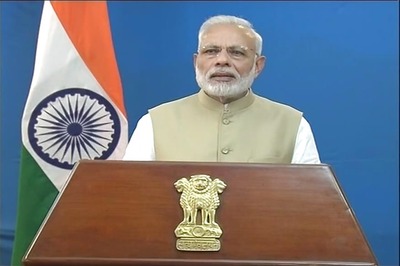
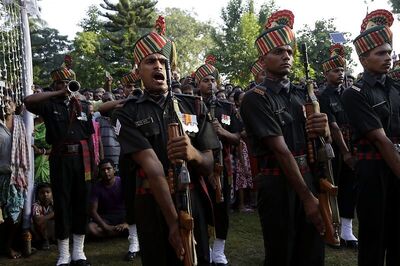

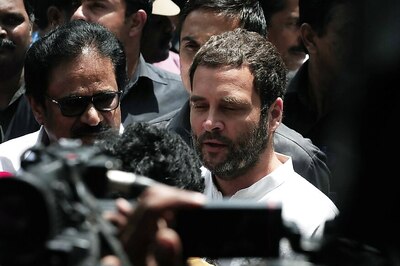
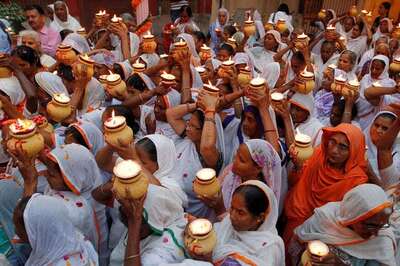

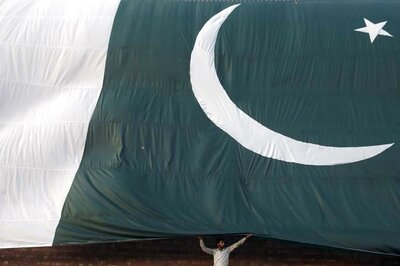


Comments
0 comment